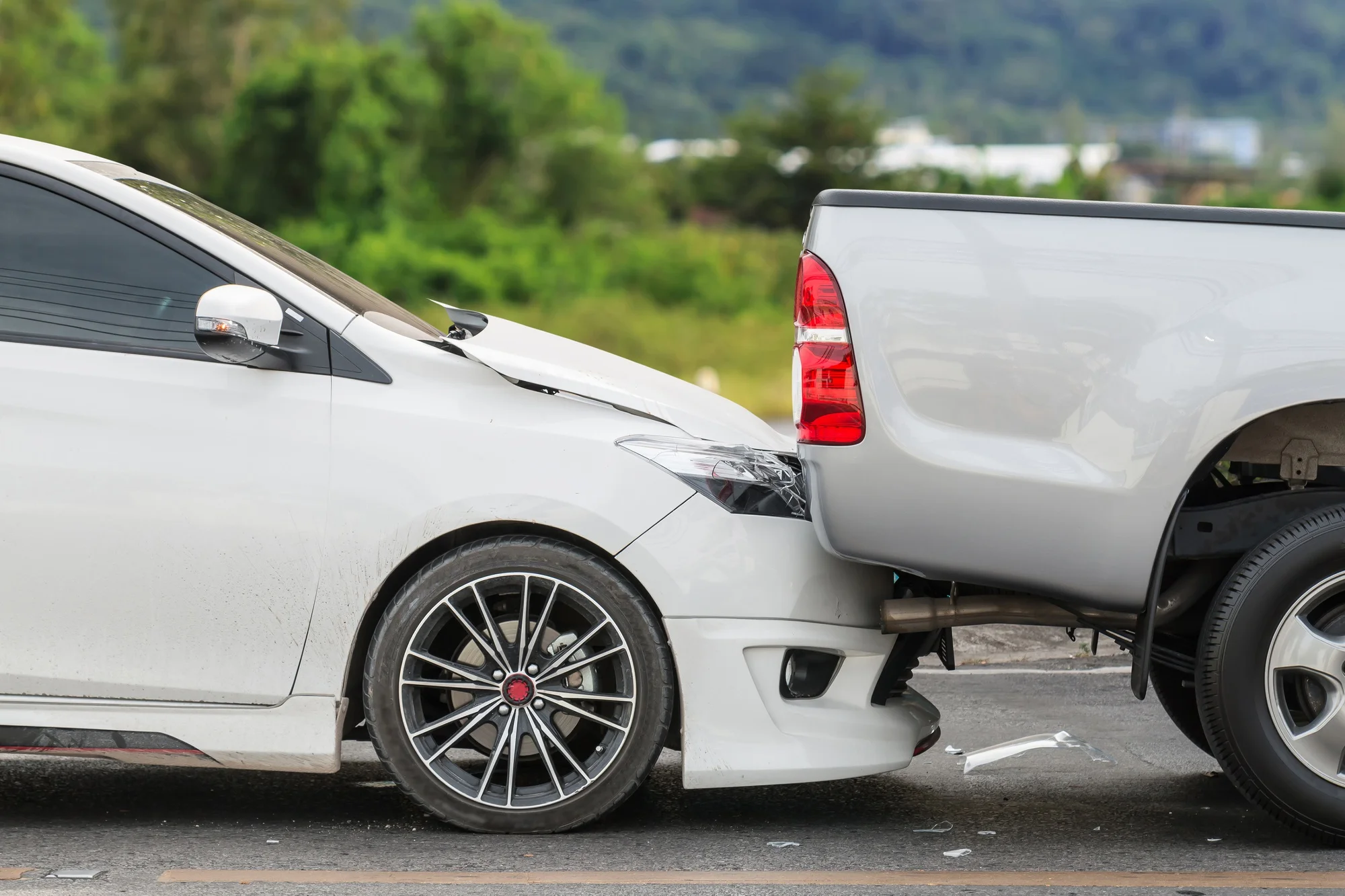The financial aftermath of a rear end collision often raises pressing questions about potential compensation. When navigating the complex landscape of personal injury settlements, accident victims frequently seek clarity regarding expected payouts. Yet determining a standardized settlement value proves challenging due to each case’s distinct characteristics. Settlements can range dramatically, from modest sums of a few thousand dollars to substantial awards reaching into millions depending on numerous case specific elements. These elements encompass injury severity, available insurance coverage, quality of legal representation, documented financial losses, and long term impact on the victim’s life. To establish realistic expectations, it’s essential to understand that rear end collision compensation aims to restore victims to their pre accident financial and physical condition through carefully calculated damages that account for both tangible and intangible losses.
Rear End Accident Statistics
National data reveals a significant pattern in vehicular accidents across American roadways. Rear end collisions represent a substantial portion of traffic incidents, warranting careful attention to their frequency and impact on public safety. While these accidents may not top the list of most lethal crash types, they nonetheless present considerable risks to drivers and passengers alike.
- Latest Traffic Safety Report data from the National Highway Traffic Safety Administration demonstrates that rear end collisions constitute more than one quarter (27.8%) of all motor vehicle accidents in the United States which makes them the most frequently occurring type of vehicular incident annually.
- Fatal rear end collision statistics underscore the serious nature of these accidents, with 2,428 deaths attributed to this crash type, representing 6.8% of all fatal vehicular incidents nationwide according to recent NHTSA assessments.
What Happens to You in a Rear End Collision?
The physical impact of a rear end collision on the human body involves complex physics principles centered around gravitational forces and momentum transfer. The severity of bodily effects correlates directly with the mass and velocity of the colliding vehicles with larger vehicles and higher speeds intensify the collision’s impact. Central to understanding these injuries is the concept of gravitational force (G force), which describes the intense pressure exerted on the body during rapid acceleration or deceleration. When two vehicles collide in a rear end scenario, occupants experience sudden directional changes that create powerful G forces, similar to the sensation felt during extreme amusement park rides but with potentially harmful consequences. Two distinct physical reactions occur during impact:
- The occupant of the struck vehicle experiences an abrupt forward thrust from a stationary position which subjects their body to unexpected acceleration forces that can cause significant physical trauma.
- The driver of the striking vehicle undergoes sudden deceleration as their forward momentum is forcefully halted which creates a different but equally concerning set of physical stresses on their body.
What Injuries Can You Sustain from Getting Rear Ended?
Rear end collisions can result in a spectrum of physical trauma, with injury severity often influenced by factors such as impact force, vehicle size differential, and collision circumstances. Notably, larger vehicles colliding with smaller ones can create particularly hazardous conditions for occupants. The scope of potential injuries extends from minor discomfort to severe trauma, with some conditions becoming apparent only after thorough medical evaluation using advanced diagnostic tools. Immediate medical attention following any rear end collision serves dual purposes: ensuring proper treatment of potentially hidden injuries and establishing crucial documentation for future settlement claims. The most common injuries sustained in rear end accidents include:
- Whiplash: A distinctive cervical spine injury occurring when the neck experiences sudden backward motion, ranging from mild cases in low speed impacts to severe nerve damage in high velocity collisions
- Back Trauma: Encompasses conditions from minor lumbar discomfort to serious disc herniation, potentially requiring extensive treatment including surgery or physical therapy
- Cranial Impact Injuries: Includes concussions and traumatic brain injuries, with severity often determined by airbag deployment and head restraint interaction
- Musculoskeletal Damage: Spans from surface level contusions and lacerations to deep tissue trauma including muscle strain and shoulder stiffness
- Skeletal Fractures: Affects various body regions including facial bones, extremities, and joints, with healing timelines and functional recovery varying significantly based on injury location and severity
Can You Sue Someone for Rear Ending You?
Legal recourse following a rear end collision exists through personal injury litigation, though pursuing a lawsuit requires careful consideration of multiple factors. While victims maintain the legal right to seek compensation through the courts, the practicality of litigation depends significantly on the at fault driver’s insurance status and financial resources. Consulting with a qualified personal injury attorney provides essential guidance in evaluating claim viability and exploring all available compensation options. When proceeding with legal action, plaintiffs can pursue several categories of damages:
- Medical Treatment Costs: Compensation for all accident related healthcare expenses
- Vehicle and Property Repairs: Recovery of costs for damaged vehicle and personal property
- Pain and Suffering: Non-economic damages addressing physical discomfort and emotional distress
Beyond financial recovery, these legal actions serve to promote accountability and safer driving practices. However, potential plaintiffs should carefully assess litigation costs against potential recovery to ensure pursuing legal action aligns with their financial interests.
Average Rear End Accident Settlement Amounts in California
In California, rear end collision settlements demonstrate considerable variation based on injury severity and specific case circumstances. Analysis of actual court cases reveals distinct patterns in compensation levels. The scope of compensation expands dramatically depending on injury classification and long term impact, with comprehensive studies of California court records providing detailed insights into expected settlement ranges. A notable finding shows neck and back injuries commanding a particularly wide settlement spectrum, reflecting the complex nature of these injuries and their potential long term effects.
Should You Accept an Insurance Company’s Settlement Offer?
Evaluating an insurance company’s initial settlement proposal following a rear end collision requires careful consideration of long term implications. While the prospect of swift compensation may appear attractive, insurance adjusters operate primarily to minimize corporate financial exposure rather than maximize victim compensation. Initial settlement offers typically represent a fraction of the claim’s actual value, as insurers strategically propose lower amounts hoping to resolve cases quickly before victims fully understand their rights or consult legal counsel. An experienced personal injury attorney brings essential expertise to the negotiation process, possessing both comprehensive understanding of claim valuation and familiarity with insurance industry practices. Legal representation provides critical advantages:
- Thorough assessment of damages
- Strategic negotiation capabilities
- Willingness to pursue litigation when settlement offers prove inadequate.
By partnering with qualified legal counsel before accepting any settlement offer, accident victims significantly improve their chances of securing compensation that genuinely reflects their losses and necessary future expenses.
How are Rear End Collision Settlements Calculated and What Do They Cover?
The calculation of rear end collision settlements follows a comprehensive framework designed to address the full scope of impacts experienced by accident victims. Settlement valuations aim to restore individuals to their pre-accident status through a multifaceted assessment of losses and consequences. This restoration process requires thorough evaluation across various categories of damages to ensure fair compensation for both immediate and long term effects of the collision. The legal system recognizes three distinct classifications of damages when determining appropriate compensation: economic damages that cover quantifiable financial losses, non-economic damages addressing intangible personal impacts, and punitive damages which may apply in cases of extreme negligence. Each category plays a vital role in formulating a settlement that adequately addresses the complete spectrum of harm sustained by the accident victim, from tangible expenses to psychological trauma.
Economic Damages
Economic damages encompass the quantifiable financial burdens that result from a rear end collision. These direct monetary losses include both immediate expenses and ongoing costs that stem from the accident. The scope of economic damages extends beyond initial medical costs and vehicle repairs, incorporating any financial impact that can be documented with receipts, bills, or economic projections. Such damages form the foundation of any personal injury claim, representing concrete financial which include:
- Medical Care Expenses: Encompasses all healthcare related costs including hospital stays, physician visits, surgical procedures, diagnostic imaging, medications, medical devices, therapeutic treatments, mental health services, and emergency transportation
- Income Related Losses: Compensation for lost wages, reduced earning capacity, and impacts on future career opportunities
- Property Damage: Covers vehicle repair or replacement costs, along with any other damaged personal property
- Accommodation Expenses: Includes necessary home or vehicle modifications to accommodate injuries such as mobility equipment or structural changes
- Support Service Costs: Compensation for outsourced domestic services when injuries prevent normal activities including household maintenance, yard work, or personal care assistance
How Are Economic Damages Calculated?
The calculation of economic damages requires a meticulous documentation process combined with sophisticated forecasting methods. While immediate expenses can be readily quantified through collected medical bills, repair estimates, and income statements, determining the full scope of economic impact involves complex projections of future costs. Documentation serves as the foundation for calculations, requiring victims to maintain comprehensive records of all accident related expenses and financial losses. However, the true challenge lies in accurately forecasting long term financial implications. This includes anticipating future medical treatments, ongoing therapeutic needs, and potential changes in earning capacity throughout one’s career span. Professional analysis often becomes necessary to establish reliable projections, particularly when injuries result in permanent impairment or require extended recovery periods. Expertise from medical professionals, economic analysts, and legal specialists helps create accurate estimates of lifetime costs, ensuring that settlement calculations encompass both current expenses and future financial needs.
Non-Economic Damages
Beyond tangible financial losses, rear end collisions often result in profound personal impacts that significantly affect quality of life. These non-economic damages represent the intangible yet very real consequences of an accident that cannot be measured through bills or receipts. While these impacts may be harder to quantify in monetary terms, they form a crucial component of personal injury compensation, acknowledging the human cost of accidents beyond purely financial considerations.
- Physical Distress: Compensation for ongoing bodily pain and physical discomfort resulting from accident injuries
- Emotional Trauma: Recognition of psychological impacts including anxiety, depression, and post-traumatic stress following the accident
- Loss of Consortium: Addresses the impact on personal relationships and family dynamics including diminished companionship
- Lifestyle Limitations: Covers reduced ability to participate in recreational activities, hobbies, and daily pleasures previously enjoyed
- Aesthetic Changes: Compensation for visible alterations to appearance resulting from accident injuries including scarring or permanent disfigurement
How Are Non Economic Damages Calculated?
Quantifying non-economic damages presents unique challenges since these losses cannot be validated through conventional documentation like receipts or invoices. Insurance companies employ standardized calculation methods to assign monetary values to these intangible impacts, though their approaches often undervalue the true extent of personal suffering. Legal professionals can strengthen non-economic damage claims through comprehensive evidence gathering including expert testimony, psychological assessments, and personal impact statements from family members and associates. This thorough documentation helps build a compelling case for fair compensation that more accurately reflects the depth of emotional and physical trauma experienced. Primary calculation methods for non-economic damages include:
- Daily Rate Approach: Calculates compensation based on the duration between the accident and maximum medical improvement, assigning a daily value comparable to the victim’s typical earnings
- Economic Multiplier System: Determines compensation by applying a factor (typically 1-5x) to total economic damages, with higher multipliers corresponding to more severe injury impacts
Punitive Damages
Punitive damages represent a distinct category of compensation that extends beyond mere restitution for losses suffered. Reserved for exceptional cases involving egregious conduct, these damages serve a dual purpose: to penalize defendants for particularly reprehensible behavior and to deter similar actions by others in the future. The threshold for pursuing punitive damages in rear end collision cases is notably high, requiring clear evidence of deliberate misconduct or extreme negligence that goes well beyond typical careless driving. Common scenarios warranting consideration for punitive damages include collisions caused by intoxicated drivers, aggressive road rage incidents, or cases involving willful disregard for safety protocols. Courts carefully evaluate the defendant’s state of mind and level of culpability when determining whether punitive damages are appropriate, making them relatively rare in standard rear end collision cases but potentially substantial when awarded.
Why Do Rear End Settlement Amounts Differ So Much?
Settlement values in California rear end collision cases reflect a complex interplay of legal, situational, and economic variables. The state’s comparative negligence system allows for nuanced liability determinations that considers potential fault from both parties involved. Regional variations in traffic patterns, from dense urban centers to rural roadways, further diversify settlement outcomes. Combined with California’s typically higher healthcare costs and varying economic conditions across regions, these factors create a multifaceted framework for determining compensation. Factors that can influence settlements:
- Legal Environment: California’s comparative negligence laws and court specific approaches to case management directly impact settlement negotiations
- Geographic Considerations: Local traffic patterns, road conditions, and regional economic factors affect both accident dynamics and compensation standards
- Insurance Framework: Policy limits and coverage types set practical boundaries for recovery, despite California’s mandatory minimum coverage requirements
- Healthcare Context: California’s relatively high medical costs significantly influence settlement calculations, particularly in cases requiring extensive treatment
- Legal Representation: Attorney expertise and negotiation skills play a crucial role in securing optimal settlements
- Judicial Precedent: Previous verdicts in similar cases establish reference points for reasonable compensation expectations
- Timing Considerations: Statute of limitations and case filing timeline can impact settlement dynamics
- Economic Variables: Regional cost of living and wage levels influence calculations of both economic and non-economic damages
- Injury Severity: The extent and long term impact of injuries fundamentally shape settlement amounts including both immediate and future costs
The interaction of these diverse factors explains why seemingly similar accidents can result in markedly different settlement amounts and require individualized assessment of each case’s unique circumstances.
How Fault Impacts Rear End Settlements
In California’s legal framework, fault determination significantly shapes rear end collision settlements through the state’s pure comparative negligence doctrine. This sophisticated system enables a nuanced approach to liability assessment, where responsibility can be distributed among multiple parties based on their respective contributions to the accident. While rear drivers typically bear primary responsibility in these incidents, California’s system recognizes that accident dynamics often involve complex interactions and circumstances that may warrant shared liability.
Who is Responsible in Read End Car Accidents?
In determining fault for rear end collisions, the traditional presumption places primary responsibility on the following driver, though this standard principle has notable exceptions. The fundamental obligation of maintaining safe following distance and remaining alert to traffic conditions typically makes the rear driver liable for resulting collisions. However, certain scenarios can shift fault dynamics, creating more complex liability situations that require careful examination of all contributing factors. The following factors impact culpability in rear end accidents:
- Standard Rear End Liability: Following driver bears responsibility due to failure to maintain appropriate distance or attention such as colliding with properly stopped vehicles at traffic signals
- Lead Vehicle Contribution: Front driver may share fault through actions like sudden, unnecessary braking or failing to maintain functional brake lights
- Reverse Collision Responsibility: Lead vehicle driver assumes full liability when actively backing into a properly positioned vehicle behind them
- Impaired Driver Scenarios: Intoxication or other forms of driver impairment create clear liability regardless of position in the collision
- Multiple Vehicle Incidents: Chain reaction collisions may involve distributed fault among several drivers
- Reckless Driving Patterns: Aggressive or unsafe driving behaviors can establish clear liability regardless of vehicle position
How Long Does It Take to Settle Rear End Car Accidents?
The duration of rear end collision settlement processes varies significantly, with most cases averaging approximately 18 months from attorney engagement to resolution. However, individual case timelines can range from several months to multiple years depending on various circumstances. Settlement proceedings typically begin with a comprehensive case evaluation and evidence gathering phase, followed by negotiations with insurance providers. For cases that proceed to litigation, additional months or years may be necessary for proper case preparation and court proceedings. While expedited settlements might appear attractive, rushing the process often results in inadequate compensation that fails to address long term impacts. The following factors all impact the duration and timeline of receiving a settlement for a rear end accident claim:
- Liability Disputes: Settlement duration often extends when fault attribution becomes contested, with insurance companies scrutinizing potential shared responsibility
- Multiple Party Involvement: Cases involving several vehicles or victims typically require additional time for coordinating claims and distributing limited insurance resources
- Injury Complexity: Severe injuries necessitate longer periods to reach maximum medical improvement and accurately assess future care needs, particularly when insurers contest larger claims
- Evidence Collection Process: Gathering comprehensive documentation including medical records, accident reports, and witness statements, requires thorough investigation and coordination
- Negotiation Dynamics: While some negotiations conclude within weeks, complex cases may require extended discussions or proceed to trial if parties cannot reach satisfactory agreements
The investment of appropriate time in the settlement process, though potentially lengthy, typically yields more comprehensive compensation that better serves the victim’s long term interests.
Mistakes That Will Hurt Your Rear End Accident Claim
The process of filing a rear end collision claim requires careful attention to detail and strategic decision making to ensure maximum compensation. Numerous potential missteps can significantly impact claim outcomes, potentially reducing settlement values or completely undermining cases. Understanding and avoiding these common errors proves essential for protecting your legal rights and securing appropriate compensation for your injuries and damages. Avoid making these mistakes:
- Medical Care Delays: Postponing or neglecting immediate medical evaluation undermines injury documentation and provides insurers grounds to dispute claim severity
- Documentation Oversights: Failing to report accidents officially, gather evidence at the scene, or maintain comprehensive records of injuries and expenses weakens claim foundation
- Communication Errors: Making premature fault admissions or providing inconsistent statements to various parties can compromise claim credibility
- Strategic Misjudgments: Accepting early settlement offers without full injury assessment or attempting to handle significant claims without legal representation often results in inadequate compensation
- Timeline Management: Missing critical filing deadlines or response windows can severely limit or eliminate recovery options
- Evidence Preservation: Neglecting to maintain physical evidence including vehicle damage documentation and witness information compromises a victim’s ability to prove claim elements
- Disclosure Issues: Failing to properly address preexisting conditions or provide complete damage assessments can create complications during settlement negotiations
- Professional Guidance: Disregarding legal counsel’s recommendations or attempting self-representation in complex cases often leads to suboptimal outcomes
- Emotional Management: Allowing confrontational interactions or emotional responses to influence case proceedings can damage claim credibility and negotiating position
What is the Best Thing You Can Do to Improve Your Rear End Settlement?
Professional legal representation stands as the most effective strategy for maximizing rear end collision settlements and protecting your interests throughout the claims process. Insurance providers consistently aim to minimize payouts, often leveraging their extensive experience to reduce settlement amounts when dealing with unrepresented claimants. An experienced accident attorney brings essential expertise to navigate complex negotiations, properly value claims, and ensure adequate compensation for all damages. While most rear end collision cases resolve through settlement negotiations, skilled legal counsel maintains readiness to pursue litigation, when necessary, which demonstrates to insurers the seriousness of your claim. This professional advocacy proves particularly valuable in complex cases involving disputed liability, insufficient insurance coverage, or multiple parties, where the path to fair compensation requires sophisticated legal strategy and thorough understanding of accident law.
When Should You Contact an Expert Car Accident Lawyer?
Immediate legal consultation following a rear end collision provides optimal protection for your interests and claim value. Many accident victims initially believe their cases straightforward enough to handle independently, assuming insurance companies will operate fairly, and fault determination will remain clear cut. However, this approach often leads to compromised evidence collection, missed documentation opportunities, and potential settlement complications. Delaying legal representation can result in the loss of crucial evidence such as surveillance footage, vehicle damage documentation, and witness statements, while gaps in medical treatment can weaken the connection between injuries and the accident. Early attorney engagement offers multiple advantages: professional case evaluation, strategic evidence preservation, accurate claim valuation, and expert handling of insurance negotiations. This proactive approach allows victims to concentrate on their recovery while experienced counsel manages legal complexities, evidence gathering, and settlement negotiations to secure optimal compensation. Most accident attorneys offer complimentary initial consultations, making early legal guidance accessible without financial risk while maximizing the potential for favorable case outcomes.
Contact Mesriani Law Group if You Have Been Rear Ended
After experiencing a rear end collision, securing skilled legal representation can significantly impact your recovery of both health and damages. The complexity of these cases, combined with the challenges of dealing with insurance companies, makes professional guidance invaluable. Mesriani Law Group brings extensive experience in handling rear end collision cases, offering comprehensive legal support through every stage of the claims process. Our dedicated team understands the nuances of California accident law and maintains a proven track record of securing favorable settlements for our clients. Contact our office today for a free consultation to discuss your case, understand your rights, and learn how we can help ensure you receive the compensation you deserve.
Rear End Settlement FAQs
Do you think 150000 is too much for a rear in truck accident?
The appropriateness of a $150,000 settlement for a rear end truck accident depends entirely on the specific circumstances of the case including injury severity, medical costs, lost wages, and long term impacts. While this amount might be insufficient for cases involving serious injuries or permanent disabilities, it could be reasonable for moderate injuries with full recovery, highlighting why each case requires individual evaluation based on its unique factors.
Who gets hurt worse in a rear end collision?
In a rear end collision, occupants of the front vehicle typically experience more severe injuries due to the sudden, unexpected impact forcing their vehicle forward while they remain stationary. However, injury severity can vary significantly based on factors like vehicle size disparity, crash speed, and safety features, with smaller vehicles being particularly vulnerable when struck by larger ones such as trucks or SUVs.







